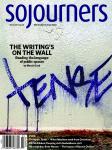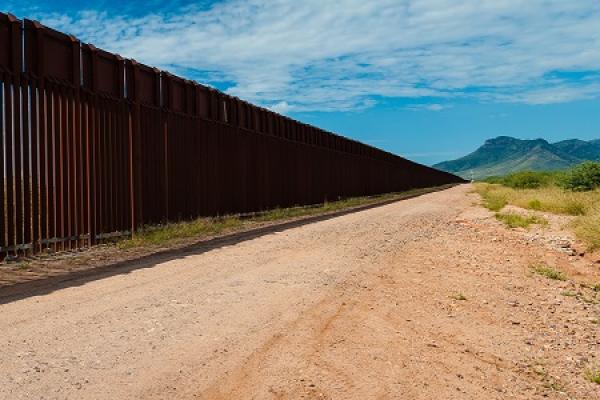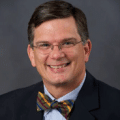"REMEMBER YOU are dust, and to dust you shall return.” Each year the community of Jesus stands at the beginning of the season of Lent and recalls death, mortality, corporeality. We are dust. We are dying. And, as the pastor smears the mark of the cross on the foreheads of the faithful on Ash Wednesday, she says, “Remember you are dust.”
Such an awareness is where resurrection hope begins. It must. How can one celebrate resurrection hope without first understanding that we are dust and to dust we shall return? The act of marking ourselves with ashes is not morbid. Such rituals of death and resurrection give witness to God’s grace for both the dead and those who love them.
But what happens when there is no body over which to mourn?
In circumstances where a loved one’s body is lost, the pain and grief are magnified. A plane disappears over the depths of the waters, and bodies are never found. A person goes missing, and remains are never recovered. Whatever the circumstance, a funeral without a body is almost always a source of extra pain. Not only is a loved one dead, but the ritual act of tending to their body is taken away.
There are people in the United States, Mexico, and Central America who experience such trauma largely because of U.S. border policy. As people die migrating through the desert lands of the southern border of the United States, their bodies are literally returning to dust, and their suffering is largely invisible. Rather than receiving ritual care from family and community at the time of death, these immigrants die alone. Their remains are left in the desert, discovered only by chance.
A humanitarian crisis at the border
The Colibrí Center for Human Rights, based in Tucson, Ariz., is a nonprofit seeking justice amid the current failures of immigration and border life. Colibrí describes itself as “a family advocacy nonprofit” that works “with families, forensic scientists, and humanitarians to end migrant death and related suffering on the U.S.-Mexico border.”
When remains are found, Colibrí steps in to help. When a loved one goes missing crossing the border going north, Colibrí is a place to check.
In Colibrí’s Missing Migrant Project, a team works with families of the missing to create forensically detailed missing-person reports. Colibrí specializes in collecting often-overlooked details about missing persons: tattoos, unusual physical characteristics, and items they may have been carrying at the time they went missing, including prayer cards, photographs of family members, belt buckles, or other unique belongings. This information is compared to evidence collected by forensic scientists and medical examiners in hopes of identifying the dead.
“Each morning, we greet the new day by lighting the candles on our altar to the missing, and making sure there is sugar water in the hummingbird feeder outside our window,” Robin Reineke, Colibrí’s co-founder and executive director, told Sojourners.
The hummingbird, colibrí in Spanish, is a symbol of connectivity between the living and the dead in many indigenous cultures of the Americas and is pertinent to the work done in the Colibrí office every day. A typical morning is spent processing voicemails, emails, and Facebook messages from family members searching for missing relatives. These contacts are logged as part of the missing-person reports that are completed by staff as they return calls.
Colibrí’s office is across the hallway from the morgue for Pima County, Ariz. “Sometimes it is difficult and a bit strange to work just 20 feet away from a morgue,” said Reineke. “There are sounds, smells, and sights that are disturbing. We face this aspect of our work with care, both for ourselves and for the dead. We take solace in the fact that, at least at this office, [the dead] will be treated with respect, and that everything possible will be done to identify them and return them to their families where they can be properly mourned.”
By developing the first comprehensive system to track and compare missing and unidentified persons on the border, Colibrí is facilitating identifications, providing answers to families of the missing, and informing policy discussion and decision-making.
Since 1998, more than 6,330 people have died crossing the multistate U.S.-Mexico border. Since 2001, more than 2,500 remains have been recovered from the desert in Pima County. More than 900 are unidentified, and the numbers continue to grow. Between January and May 2016, 32 remains were discovered and brought to the Pima County morgue. And in what has become the new normal, the numbers reached record highs in June and July with 24 remains found each month.
“It’s a humanitarian crisis,” said Reineke.
Investigating death with dignity
The work of identifying remains is done largely through the unique missing person reports collected by Colibrí and compared with reports on discovered remains in the medical examiner’s office. As helpful as these extensive missing person reports have been, there is still a sense that the staff of Colibrí and the medico-legal death investigators are searching for a needle in a haystack.
Reineke recounted the day a forensic anthropologist stopped by the Colibrí office to ask if they had any missing person reports for “young men, between 14 and 17 years old, who disappeared two to three years ago.” They ran the search in Colibrí’s database and came up with nearly 50 possibilities.
Matches are sometimes difficult. Remains come to the morgue in all kinds of condition, from persons recently deceased to skeletal pieces from a person long dead. What’s more, for those working in the midst of these border deaths, there is always an awareness that many remains are still out there in some remote area of the Sonoran Desert.
Recently Colibrí has begun a new initiative: DNA data. In December 2016, the Colibrí team traveled to parts of the U.S. with large immigrant populations from Mexico and Central America to collect information about missing persons, as well as DNA samples from family members in order to facilitate better opportunities for identifying the dead.
The first collection of DNA samples took place in San Francisco. Over a three-year period, the team will travel to New York, the Carolinas, Sacramento, and Los Angeles to meet family members of the missing and collect DNA samples. The DNA collection will become another tool in Colibrí’s work of identifying the dead and caring for their families.
“Now we have the funding and the relationships to be able to collect DNA from families and compare it directly to the DNA collected from the remains,” Reineke said. These meetings with families of the missing build a connection to people who care for them and for their lost beloved. The time the Colibrí team spends collecting data is, in fact, a moment of human encounter in the midst of suffering. These moments are opportunities to bring grace to bear in situations of trauma and grief.
In 10 years Colibrí has helped identify 100 remains, but many are left unidentified—a reality that weighs heavily on staff and volunteers of Colibrí and other people doing this kind of work. The DNA program may increase Colibrí’s ability to carry out its mission.
“We close out our day by putting out the candles on the altar and closing the door to our office. These intentional acts are meant to help us, so that we may return home to our families carrying just a little bit less guilt and sadness from our work,” said Reineke.
Killed by bad policy
Recent border enforcement practices have limited the number of immigrants passing through traditional and safer pathways, but they do not address the reasons people migrate to the U.S.—the so called “push” and “pull” factors influencing migration from Mexico and Central America. Economic despair, increasing violence, gang activity, and other issues push migrants from their homes, and the U.S. job market pulls them to cross the border. They will even put their lives at risk to provide for their families and children.
So while fewer migrants are coming through the safe passages, more are coming though the dangerous routes. Desert deaths have risen dramatically. Harsh mountainous deserts simply mean more people die on both sides of the border in their pursuit of safety and resources for their families.
Proposed political solutions to the push-pull factors have included increasing militarization at the border, something the data shows leads to more migrant deaths. In addition, the construction of physical barriers requires an expensive plan for ongoing maintenance. Increased security forces require funding for personnel. Building the 650 miles of border fence that was mandated by Congress in 2008 has cost $7 billion. In 2009 the Government Accountability Office estimated that completing the rest of the fence and maintaining it for 20 years would cost $11.6 billion.
In the docudrama Who Is Dayani Cristal?, the story of a real-life Honduran migrant who died in the desert, the brother of the deceased asks this question: “As I understand, the United States is investing billions of dollars in that wall. It’s a dead investment. Why invest in something that is inanimate? Why not invest in human beings?” Indeed, the border wall is not just a dead investment, it is a deadly one.
Faith communities have a unique perspective on migration and the U.S.-Mexico border. We are clear that the only effective solution to the broken, dysfunctional, and deadly immigration system is a comprehensive reform of U.S. immigration law that is compassionate, just, and safe and that recognizes the humanity of migrants who live in the push and pull of the border.
The community of Jesus is accustomed to walking with the coffins of the dead, accompanying human remains with singing, prayer, proclamation, and ritual. The church is familiar with speaking words of closure at the graveside: “In sure and certain hope of the resurrection to eternal life through our Lord Jesus Christ, we commend to Almighty God our sister, and we commit her body to the ground; earth to earth, ashes to ashes, dust to dust ...” Our liturgies speak of the sacredness of each human life. So we must advocate for reform along our southern border in ways that reduce death and suffering.

Got something to say about what you're reading? We value your feedback!

